The Epic History of Dark Souls & FromSoftware's Legendary Legacy
Discover the evolution of the Dark Souls series and FromSoftware's design philosophy, from Demon's Souls to Elden Ring. Explore how these groundbreaking games shaped the soulslike genre, influenced the gaming industry, and left an enduring legacy of challenge and discovery.
The History of the Dark Souls Series and the Legacy of FromSoftware: From Demon's Souls to Elden Ring
FromSoftware Origins and the Birth of Soulslike
The journey of FromSoftware began in 1986, long before the studio became synonymous with the soulslike genre. In the 1990s, FromSoftware released the King's Field RPG series, renowned for their high difficulty and mysterious atmosphere-traits that would later define the Souls series. Games like Shadow Tower and other early projects already challenged players with exploration-focused gameplay, survival elements, and minimal hints. King's Field IV (2004) notably introduced the stamina bar, a mechanic that would become iconic in future Souls games, restricting player actions. These design choices laid the foundation for a new direction that would eventually bring the studio worldwide fame.
In the mid-2000s, game designer Hidetaka Miyazaki joined FromSoftware and spearheaded the concept for the first Souls game. Initially, the project received little internal support and was seen as niche, but Miyazaki, inspired by challenging RPGs of the past, took a bold leap. The result was Demon's Souls (2009), the progenitor of the soulslike genre. Despite modest publisher expectations, this PlayStation 3 exclusive became a sleeper hit, earning international acclaim and paving the way for a new movement in gaming.
Demon's Souls (2009): The Dawn of the Souls Era
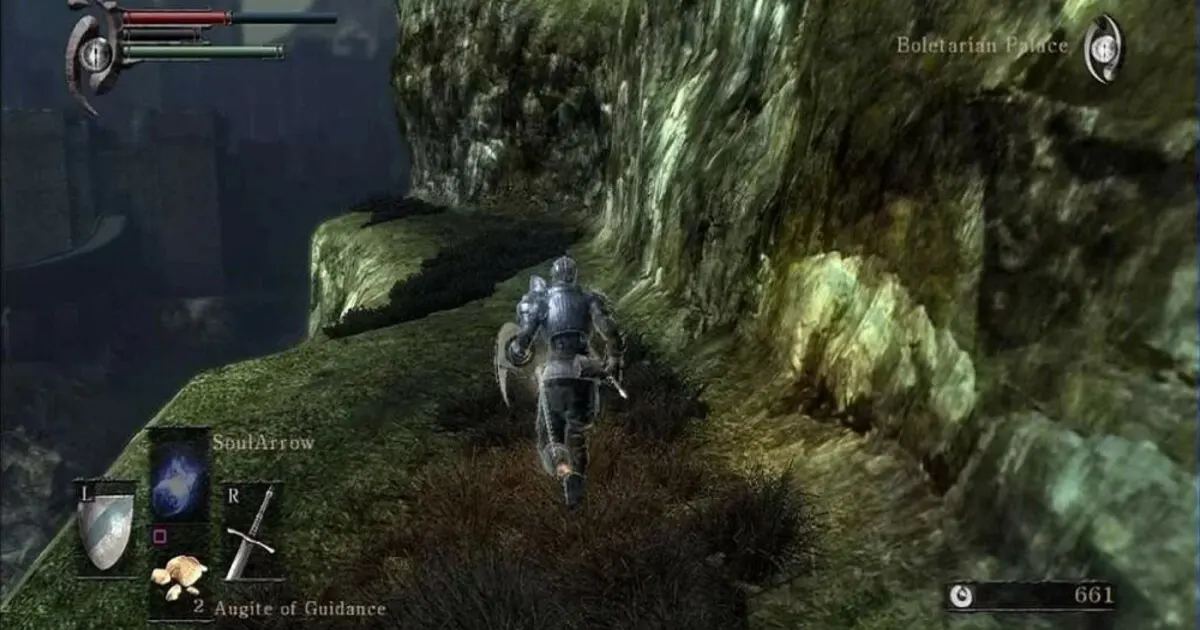
Released exclusively for PS3, Demon's Souls established the core tenets of FromSoftware's dark fantasy style. Players were thrust into the cursed kingdom of Boletaria, shrouded in fog and swarming with demons. While drawing inspiration from King's Field, the game introduced a radically new design philosophy-emphasizing tough third-person combat and autonomous exploration across a series of nonlinear levels. Instead of traditional save systems, players faced a unique challenge: dying meant losing all collected souls (the main experience currency) and respawning at the start of the level. Retrieving these souls required returning to the point of death, but dying again meant losing them forever-a risk-reward mechanic that quickly became the genre's hallmark.
Demon's Souls innovated further with its central Nexus hub connecting five distinct regions, and its "World Tendency" system, which dynamically altered difficulty and world state based on player actions. Online features seamlessly blended multiplayer into solo play: players could see ghostly echoes of others, leave helpful messages, and even invade each other's worlds as black phantoms. The infamous Old Monk boss fight pitted players against a real human opponent, creating a PvP duel. These ideas made Demon's Souls truly groundbreaking.
Initially released only in Asia, word-of-mouth and glowing import reviews convinced Western publishers to bring the game to North America and Europe. Demon's Souls achieved cult status, praised for its atmospheric art design, deep progression, and ever-present danger-while its high difficulty posed a genuine challenge even for seasoned gamers. Its success launched a new genre, soon followed by a spiritual successor on broader platforms.
Demon's Souls Remake (2020)
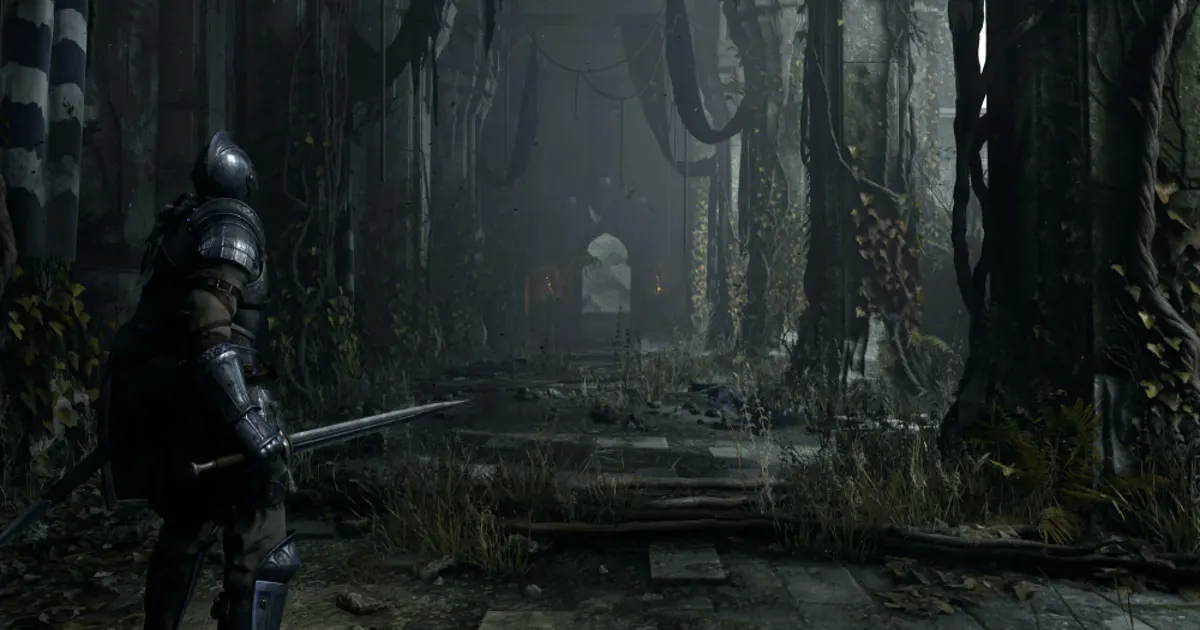
Over a decade later, the legendary game was reborn for modern audiences. Demon's Souls Remake debuted in 2020 as a PlayStation 5 exclusive, becoming a flagship launch title. Developed by Bluepoint Games with SIE Japan Studio's support (FromSoftware did not participate directly), the remake faithfully recreated the original using a new engine, significantly enhancing visuals and audio. Classic content and mechanics were preserved, with minor additions like new weapons, armor, rings, and special "grains" that grant temporary resistances. Bluepoint even considered implementing the enigmatic sixth world from the original (the broken obelisk), but ultimately left the mystery unresolved. The remake earned critical acclaim, allowing both veterans and newcomers to experience the origins of the Souls era.
Dark Souls (2011): A New Universe and Global Success
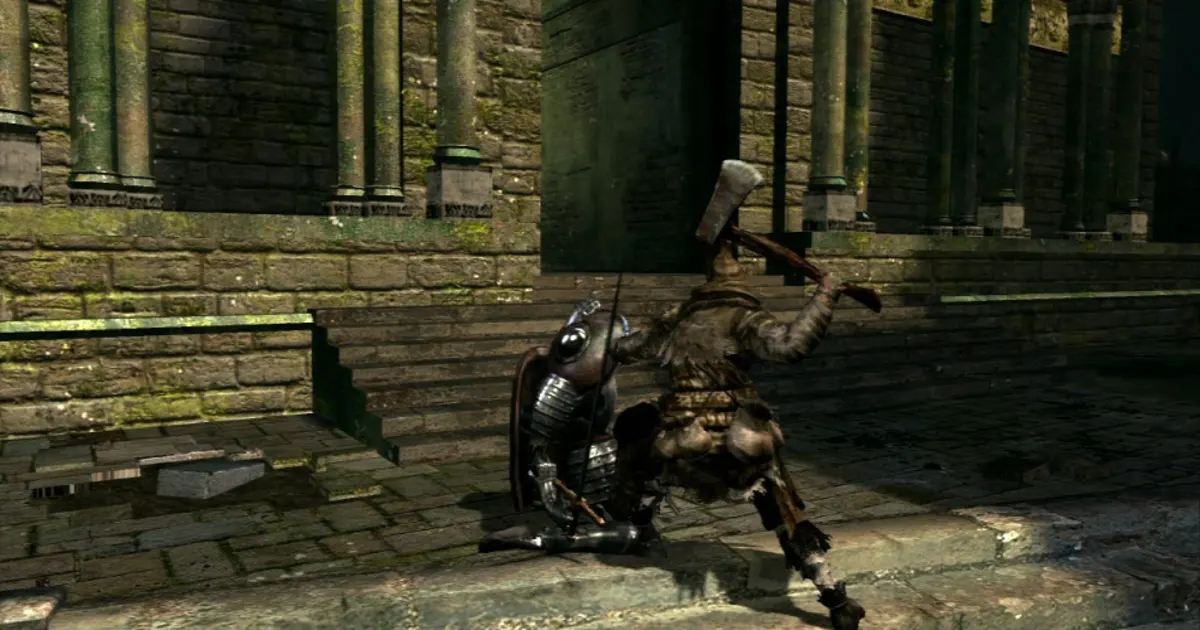
While Demon's Souls laid the groundwork, Dark Souls transformed the formula into a worldwide phenomenon. Launched in 2011 for PlayStation 3 and Xbox 360 (and later PC), this action RPG became Demon's Souls' spiritual successor, expanding on its ideas in a new universe. Set in the kingdom of Lordran, Dark Souls introduced a fully interconnected world, allowing players to explore seamlessly with cleverly hidden shortcuts. Progression was reimagined with bonfires serving as checkpoints to rest and level up, but resting or dying resurrected all standard enemies, maintaining a constant threat. The game demanded caution and route mastery-one wrong move could mean death, and retrieving lost souls became its own trial.
Dark Souls expanded asynchronous multiplayer with covenants-factions offering unique online advantages-and allowed players to summon allies for co-op or invade for PvP encounters, all without disrupting the single-player feel. The world's deep lore, conveyed through item descriptions and environmental storytelling, fueled a dedicated fanbase. Despite its reputation for punishing difficulty, Dark Souls sold over 1.5 million copies worldwide by the end of 2011, earning critical and player acclaim for its unique level design and combat system. Today, it's considered one of the decade's most influential games.
Dark Souls' impact was profound, giving rise to the "soulslike" genre-games inspired by FromSoftware's formula. Its demanding challenge and subtle storytelling inspired countless developers, and the community began dissecting Lordran's mysteries in articles and videos. Hidetaka Miyazaki's name became synonymous with the birth of a new genre.
Dark Souls: Remastered (2018)
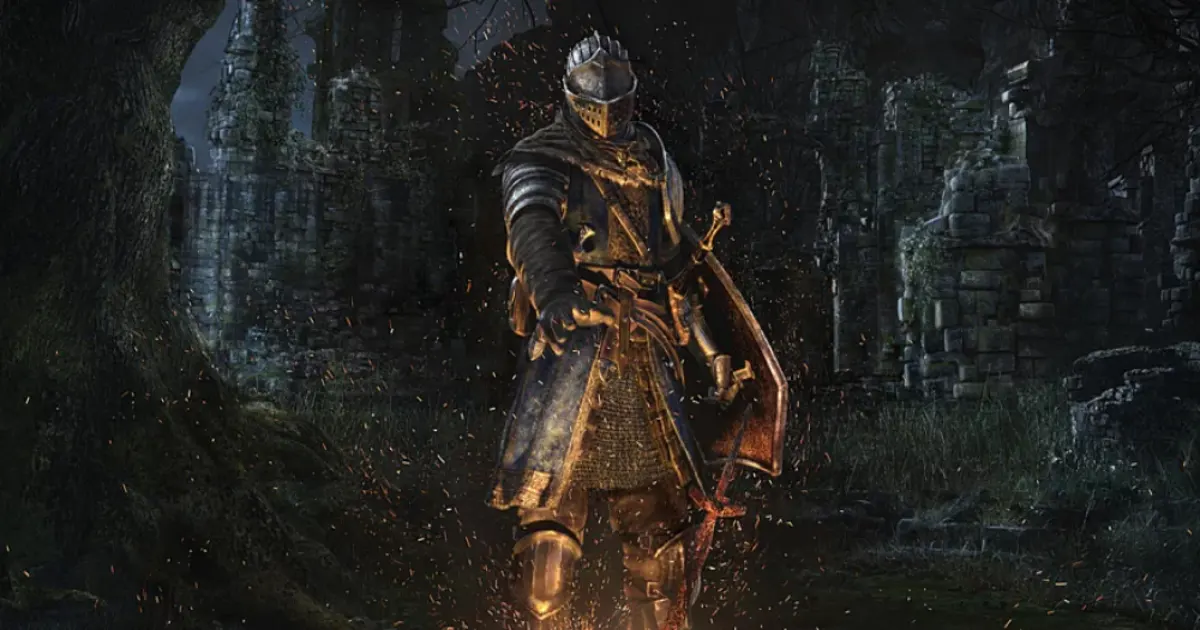
In 2018, Dark Souls: Remastered brought the landmark game to modern platforms (PS4, Xbox One, Windows, and later Nintendo Switch) with improved graphics and performance. Keeping the core gameplay intact, the remaster introduced higher resolutions and stable 60 FPS, bundled with the Artorias of the Abyss expansion. This edition let a new generation experience the series' origins without the technical limitations of old consoles. By 2023, combined Dark Souls trilogy sales (including the remaster) had surpassed 35.1 million units, and the original continues to top lists of the greatest games ever made.
Dark Souls II (2014) and Scholar of the First Sin
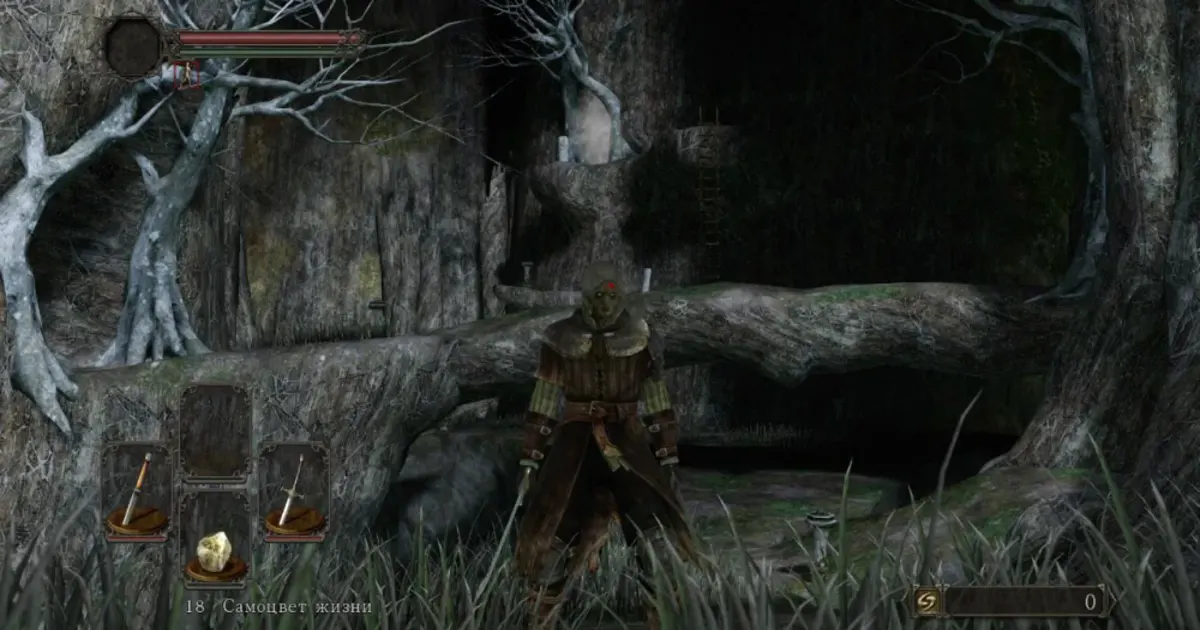
Building on its momentum, FromSoftware released Dark Souls II in 2014. While retaining the series' core, the sequel introduced changes and a new kingdom, Drangleic, thematically linked but not directly connected to the first game's lore. Notably, Hidetaka Miyazaki did not direct-Yui Tanimura took the lead-but the spirit persisted: challenging combat, deep exploration, and abundant secrets. The world was less interconnected, with a central hub (Majula) linking to branching areas, echoing Demon's Souls' structure.
Dark Souls II offered more content and flexible character progression. The "New Game Plus" mode added new enemy placements, encouraging replayability. Online features expanded, including "red phantom NPC" invasions-AI enemies mimicking human invaders. The game received three DLC chapters, the Lost Crowns trilogy, introducing new bosses and locations.
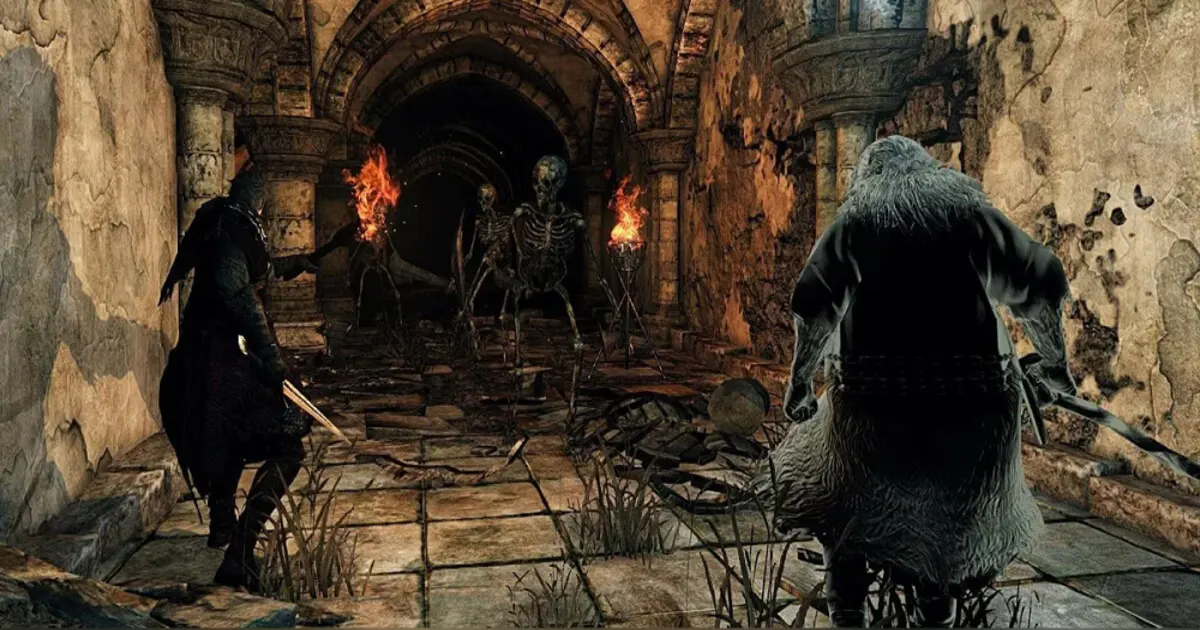
2015's Dark Souls II: Scholar of the First Sin bundled all DLC and improvements, revised enemy and item placement, enhanced graphics for PS4/Xbox One, and increased online player capacity. A new NPC, the Scholar of the First Sin, expanded the lore. This "director's cut" provided both veterans and newcomers a fresh take on Drangleic. Commercially, the sequel was a success, shipping 2.4 million copies by September 2014, despite some fan debate over its atmosphere. It cemented the series' popularity and proved the "die and try again" formula's staying power.
Dark Souls III (2016): The Trilogy Finale
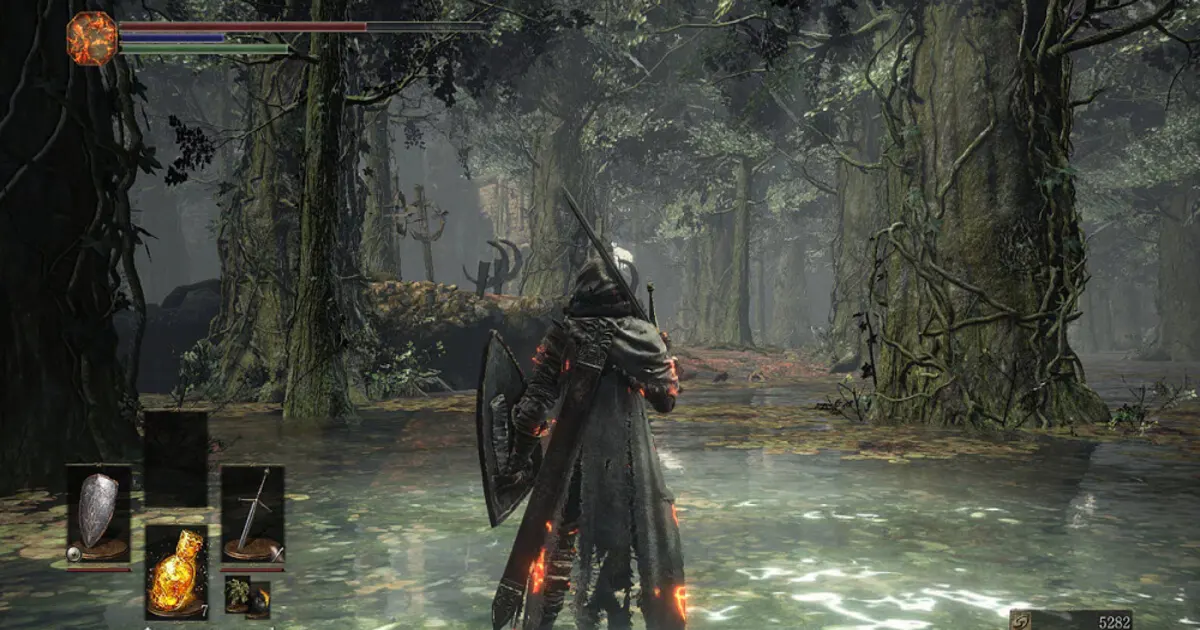
Dark Souls III, released in 2016, was announced as the series' final chapter. After the previous game's experimentation, Hidetaka Miyazaki returned to direct, resulting in a design closely tied to the original and rich with callbacks. Set in the dying world of Lothric, the game united themes of fire and darkness familiar to fans.
Gameplay became more dynamic, partly influenced by Bloodborne. Combat sped up, characters and enemies were more agile, and new "Weapon Arts"-special moves for each weapon-added tactical depth. Though the world was more linear, it was meticulously crafted, offering an immersive journey through a decaying land. Every corner dripped with despair and faded grandeur, from abandoned castles to smoldering bonfires.
Dark Souls III was the most technologically advanced entry to date, blending the best of its predecessors. Its climactic bosses and storylines provided a satisfying conclusion. The game sold over 3 million copies in its first two months and surpassed 10 million by 2019, becoming Bandai Namco's fastest-selling title at launch. It won numerous awards and solidified the series' cult status. Despite being labeled the finale, fans continued to hope for a return to the Souls universe even as FromSoftware explored new horizons.
Bloodborne (2015): A Gothic Souls Successor
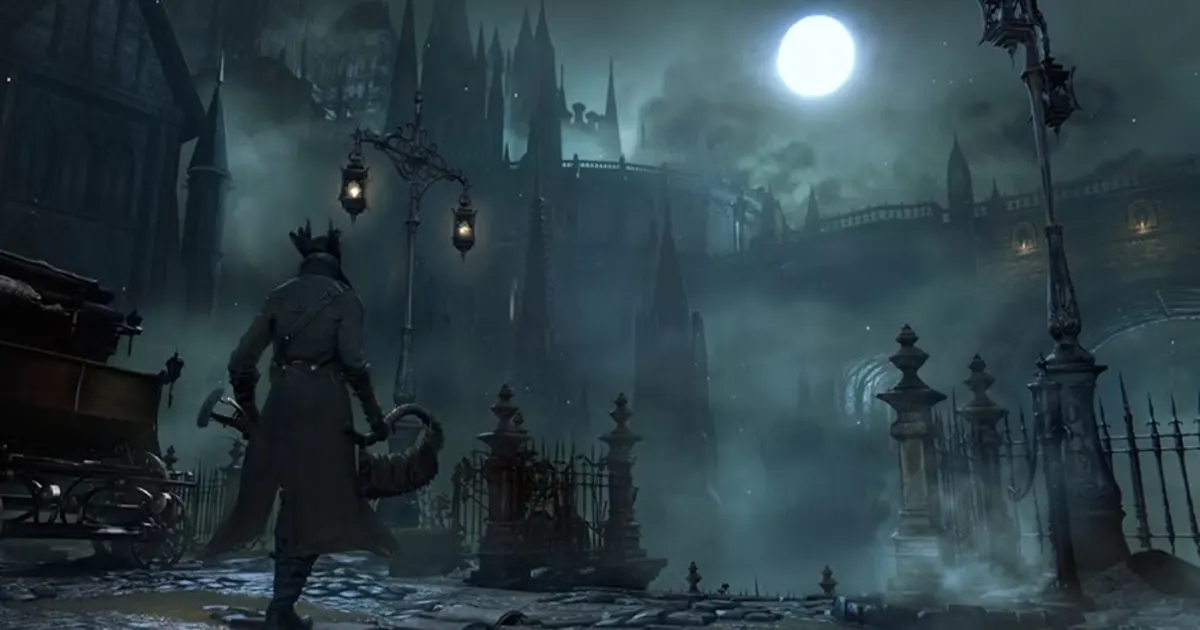
Alongside Dark Souls' evolution, FromSoftware unveiled a new PlayStation 4 exclusive: Bloodborne (2015), directed by Hidetaka Miyazaki and published by Sony. Though not officially a Souls game, its spirit and gameplay make it a close relative. Bloodborne traded fantasy kingdoms for the grim, Victorian-gothic city of Yharnam, wracked by a mysterious plague. Blending Victorian aesthetics with Lovecraftian horror, it created a world of monsters and madness.
Bloodborne inherited core Souls mechanics-exploration, tough combat, "blood echoes" (souls equivalent), and resource loss on death-but its combat was more aggressive. Shields were nearly absent; instead, players used firearms for parries and counterattacks. The "Regain" system let players recover lost health by striking back quickly, encouraging risk-taking. Hunter weapons featured two forms, switchable in combat, deepening strategy. These innovations made battles faster and more intense, with critics dubbing it a "sped-up Souls."
Storytelling emphasized atmosphere and lore, delivered through the environment, item descriptions, and cryptic dialogues. Players pieced together the mysteries of the city, old blood, and nightmare realms. Bloodborne succeeded in distinguishing itself while honoring the Souls legacy, giving rise to the term "Soulsborne." The game was widely praised for its stylish design, oppressive mood, and engaging combat, with only long initial load times and a smaller weapon roster noted as downsides. The Old Hunters expansion (November 2015) added new content, but a sequel remains elusive. Bloodborne's influence is undeniable-many of its mechanics found their way into Dark Souls III and other studios' projects.
Sekiro: Shadows Die Twice (2019): Samurai Souls Without RPG Elements
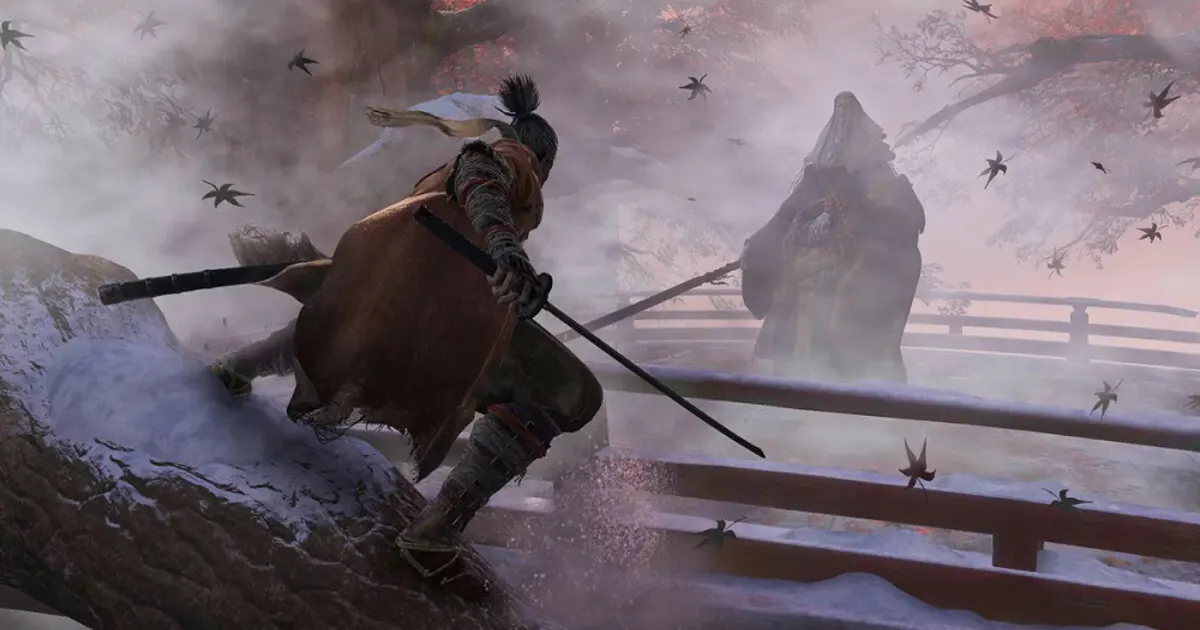
With Sekiro: Shadows Die Twice (2019), FromSoftware once again shifted settings and gameplay focus. Not directly tied to the Souls universe, Sekiro transported players to Sengoku-era Japan, a bloody age of samurai and shinobi. This time, the protagonist-Wolf-had a defined personality and backstory, differentiating Sekiro from the nameless Souls heroes.
The gameplay marked a significant departure: Sekiro is more action-adventure than RPG, lacking character creation, classes, and multiplayer. Progression comes through mastering combat and upgrading gear, not leveling up. The core mechanic is posture-breaking an enemy's stance through relentless pressure and perfect parries to deliver instant deathblows. Regular enemies fall to one, bosses require several, and both posture and health bars interplay. Success relies on timing and skill rather than stat grinding.
Sekiro encouraged stealth: Wolf could sneak, hide in tall grass, and perform silent assassinations, thinning enemy ranks before open battle. The prosthetic arm offered gadgets-grappling hook, shurikens, flamethrower, and more-for diverse tactics. The "Shadows Die Twice" title alluded to the game's revive mechanic: players could resurrect on the spot once per death, surprising foes. Overusing this ability risked spreading "Dragonrot" to NPCs, but the extra chance made Sekiro slightly more forgiving while remaining brutally challenging.
Sekiro, published by Activision, received critical acclaim for its innovative combat and rich Japanese setting, winning Game of the Year at The Game Awards 2019. While distinct, it retained the Souls DNA: dark worlds, exacting battles, and environmental storytelling. Miyazaki himself called it a separate concept, not just another Soulsborne evolution. Its success proved FromSoftware's design philosophy is universally compelling, regardless of genre trappings.
Elden Ring (2022): Open World and the Pinnacle of the Genre
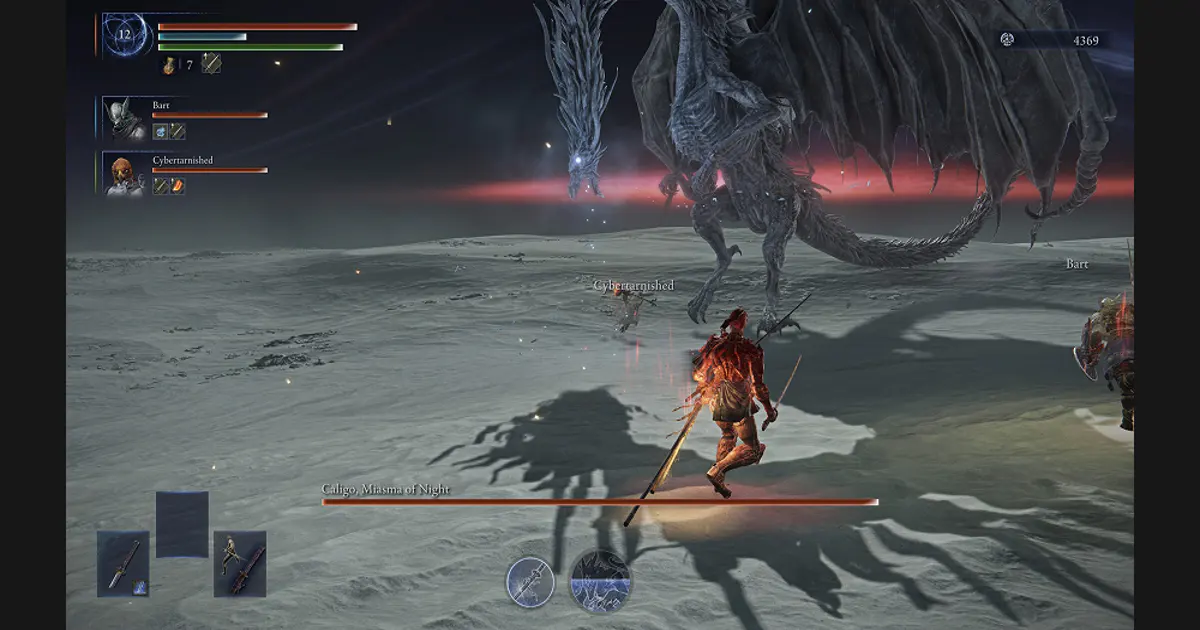
Early 2022 saw the release of FromSoftware's most ambitious title yet: Elden Ring. Directed by Hidetaka Miyazaki and developed in collaboration with famed author George R. R. Martin (who helped shape the lore and mythology), Elden Ring launched on all major platforms and instantly captivated millions.
The game's world-the Lands Between-was vast and fully open for exploration, divided into diverse regions, dungeons, and secrets. Elden Ring remained true to its Souls heritage: a familiar stamina-based combat system (stamina is less restrictive now), soul-collecting (here called runes), and the risk of losing progress on death. In essence, it's "Dark Souls in an open world," as many critics aptly described.
New features prioritized exploration and player convenience. Players could summon their spectral steed, Torrent, almost anywhere for swift traversal. Combat expanded with over 100 customizable skills (Ashes of War), letting any weapon gain unique abilities. Stealth was introduced, allowing for sneaking and silent takedowns. The world teemed with bosses-main and optional-and nonlinear progression let players tackle challenges in any order, returning later if a foe proved too tough. Spirit Ashes-summonable allies-added tactical variety, and multiplayer retained co-op summons, PvP invasions, and traditional message systems.
The narrative, as in previous games, was delivered through hints and environmental storytelling. Martin crafted the world's backstory-gods, demigods, Great Runes, and the Elden Ring-while Miyazaki built a fallen kingdom's tale for players to unravel. Multiple endings and rich lore, inspired by Norse mythology and FromSoftware's legacy, awaited discovery.
Elden Ring shattered sales records, topping 12 million copies in its first month and 20 million by February 2023. It earned over 300 Game of the Year awards-more than any title in history-and sweeping praise for its world scale, freedom, and masterful boss and level design. Many agreed FromSoftware had accomplished the impossible: bringing the Souls formula to open-world without sacrificing depth or quality. The studio announced the Shadow of the Erdtree expansion and launched the Nightreign spinoff (2025), signaling continued growth for the new franchise. Elden Ring united the best of the studio's past work and opened a new chapter for the genre.
FromSoftware's Design Philosophy and the Soulslike Legacy
From Demon's Souls to Dark Souls, Bloodborne, Sekiro, and Elden Ring, FromSoftware has adhered to a clear design philosophy that defines the soulslike genre. At its heart is the concept of challenge: these games are known for high difficulty but are regarded as fair. Players are expected to die repeatedly, learning from mistakes, gradually improving their skills, and understanding enemy patterns. Death is not a setback but a learning experience-each failure is a lesson. This intense but just trial creates powerful emotions and a profound sense of accomplishment, now a hallmark of the genre.
Another key element is minimalist storytelling and an emphasis on discovery. FromSoftware rarely tells its stories directly; instead, lore is scattered across item descriptions, NPC dialogues, and environmental details. Players are free to interpret events, with the community often piecing together the narrative collaboratively. This sense of mystery deepens immersion: the worlds feel ancient and full of secrets. As noted by Brendan Caldwell of Rock, Paper, Shotgun, intentional ambiguity fosters a sense of wonder and discovery. This approach has even influenced other media-creators of the series Stranger Things cited Dark Souls' visual and audio design as inspiration for the Upside Down.
Gameplay blends methodical and intense action. Combat typically revolves around close-quarters weapons and magic, with stamina restricting attacks, dodges, and blocks. Players must act tactically, seeking the right moment to strike. Most enemies are formidable, bosses are true tests of reflexes and strategy, and victory requires calculation and learning enemy behaviors. This "hard but achievable" formula has become the gold standard for imitators.
FromSoftware is also lauded for level design. Their worlds are intricately crafted, often nonlinear, with shortcuts unlocked through exploration. Dark Souls' interconnected world is legendary, where all areas are woven together both geographically and thematically. Many imitators struggle to match this brilliance. Visually, the games boast a dark aesthetic-ruins, gothic cathedrals, swamps, dead gods-creating an unforgettable dark fantasy or horror ambiance, now part of the studio's legacy.
The success of the Souls series and its kin spawned a whole soulslike movement. By the late 2010s, the market saw a surge of games clearly inspired by FromSoftware's formula. Typical soulslike features include high difficulty, repeated attempts, death as a learning tool, dodge/block-focused combat, limited stamina, and progression systems where resources are lost on death but recoverable. Asynchronous multiplayer has also spread-mechanics like retrieving lost loot or leaving messages now appear in many games. Notable examples include Lords of the Fallen, Nioh, The Surge, Code Vein, Mortal Shell, and Remnant: From the Ashes. Some developers adapted the formula to 2D (e.g., Salt and Sanctuary, Blasphemous), and even unrelated genres borrowed elements-Destiny, Shovel Knight, Nier: Automata, ZombiU, and Death Stranding all cite Souls as inspiration for mechanics or atmosphere.
Years after the first game, the influence of soulslike is immense. Dark Souls was named Game of the Decade by Mir Fantastiki, and "Dark Souls" itself became shorthand for any difficult challenge in pop culture. FromSoftware proved audiences are ready for hardcore games that respect player intelligence and patience, showing that a lack of handholding can be a virtue when worlds are compelling. Their games foster community-sharing knowledge, solving lore mysteries, and co-op boss battles. Even console makers felt the impact: SIE president Shuhei Yoshida cited Demon's Souls' asynchronous online features as inspiration for PlayStation 4's social tools.
FromSoftware's journey from Demon's Souls to Elden Ring epitomizes bold game design and unwavering vision. Every new game built on the last, always upholding the core philosophy: challenge the player and reward hard-earned victory. The Souls legacy lives on, both in its own sequels (often termed "Soulsborne" or "SoulsborneKiroRing" by fans) and the wider soulslike genre-now a permanent fixture of gaming. Today, it's hard to find a gamer who hasn't heard "it's like Dark Souls, but..."-a testament to FromSoftware's new standard of challenge and depth. While the studio pursues new worlds (as with Sekiro and beyond), the spirit of Souls endures: fearless exploration, overcoming the impossible, and learning stories through pain and triumph. Such a legacy is timeless-the true phenomenon of FromSoftware and their legendary Souls series.